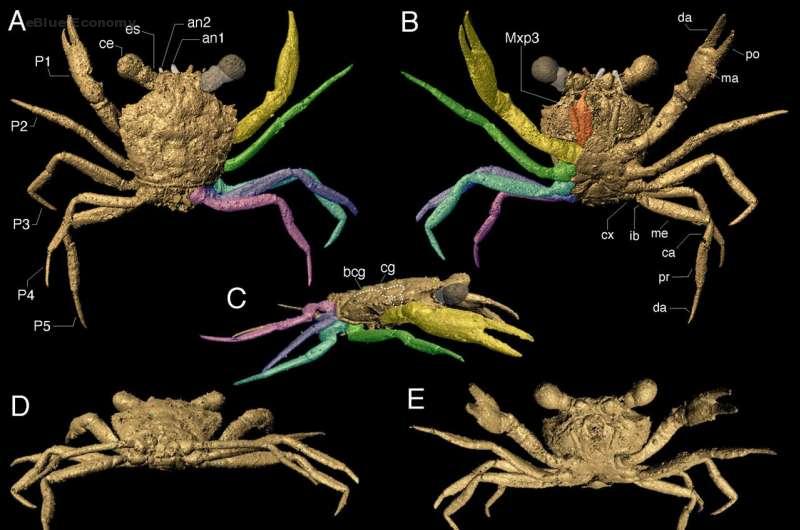-
Remains of a crab found frozen in 100-million-year-old amber were found in Asia
-
Researchers say this is the oldest modern-looking crab ever to be uncovered
-
It is also the first-ever to be found that lived among the dinosaurs
Remains of an ancient crab frozen in amber for 100 million years have been discovered, making it the oldest modern-looking crab ever to be uncovered.
Previous fossil records, which mainly consist of bits and pieces of claws, suggested nonmarine crabs came onto land and freshwater about 75 to 50 million years ago.

The 55-millimeter crab was discovered in the jungles of Southeast Asia and is the first-ever to be found that lived among the dinosaurs.
‘The discovery provides new insights into the evolution of these crustaceans and when they spread around the world,’ researchers at Harvard University, who analyzed the amber, shared in a press release.
Javier Luque, a post-doctoral researcher in the Harvard Department of Organismic and Evolutionary Biology, said in a statement: ‘If we were to reconstruct the crabtree of life — putting together a genealogical family tree — and do some molecular DNA analysis, the prediction is that nonmarine crabs split from their marine ancestors more than 125 million years ago.
‘But there’s a problem because the actual fossil record— the one that we can touch – is way young at 75 to 50 million years old… So this new fossil and its mid-Cretaceous age allow us to bridge the gap between the predicted molecular divergence and the actual fossil record of crabs.’
The specimen was originally found by miners in 2015, which recently shared it with the Longyin Amber Museum in China, allowing the Harvard team to take a deeper look.
The fossil was dubbed Cretapsara athanata, ‘the immortal Cretaceous spirit of the clouds and waters,’ in honor of the South and Southeast Asian mythological spirits.

Luque and his team used micro-CT scans during the analysis, allowing them to get a clear look at the detail of the crab’s delicate tissues like its antennae, legs, and mouthparts that are lined with fine hair, large compound eyes, and even its gills.
To their surprise, not a single hair was missing, the researchers said.
‘The more we studied the fossil, the more we realized that this animal was very special in many ways,’ said Luque.
The analysis showed that the crab did not have lung tissue, only well-developed gills indicating the animal did not completely live on land.

‘Now we were dealing with an animal that is likely not marine, but also not fully terrestrial,’ Luque said. ‘In the fossil record, nonmarine crabs evolved 50 million years ago, but this animal is twice that age.’
The researchers hypothesize that the crab was a juvenile that lived in freshwater or it may have been a semi-terrestrial juvenile crab. It may have migrated onto land from water, similar to the iconic Christmas Island red crabs, where land-dwelling mothers release their offspring into the ocean before they return to land.
The researchers now believe that an event known as the Cretaceous Crab Revolution —when crabs (true or not) diversified worldwide and started evolving their characteristic, crabby-looking body forms — happened more times than previously thought.
This new research brings the tally of when different crab species independently evolved to live outside their marine habitat to at least 12 separate times.
unique, who has been studying crab evolution for more than a decade, said he first became aware of the specimen in 2018 and has been obsessed with it since.
‘They are all over the world, they make good aquarium pets, they’re delicious for those of us who eat them, and they’re celebrated in parades and festivals, and they even have their own constellation,’ Luque said.
‘Crabs, in general, are fascinating, and some are so bizarre-looking — from tiny little pea-shaped crabs to humongous coconut crabs.
‘The diversity of form among crabs is captivating the imagination of the scientific and non-scientific public alike, and right now people are excited to learn more about such a fascinating group that is not dinosaurs. This is a big moment for crabs.’
Source: Mail Online














